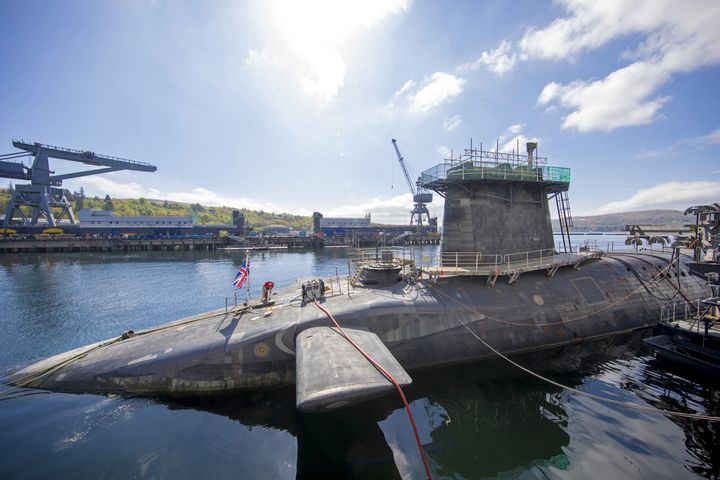
A Trident missile test dramatically failed recently, dealing yet another blow to Rishi Sunak’s government.
One of the Royal Navy’s battleships, HMS Vanguard, tried to fire a missile off the US’s east coast last month – only for it land pretty far away from its intended destination...
What is Trident?
Trident is the UK’s nuclear weapon system, with four submarines and a collection of missiles and warheads.
At any one time, one of the four submarines will be based in Firth of Clyde, on Scotland’s west coast, and is meant to be a continuous nuclear deterrent.
Each of the vessels can fire 16 missiles which are all loaded with multiple nuclear warheads.
They’re meant to blast into space at 13,600mph and then re-enter Earth, zooming towards intended targets – which can supposedly be up to 7,500 miles away from the launch site.
Those on the submarines cannot communicate with the outside world directly when on patrol, in case it could give away their location.
What happened with the latest test?
The Royal Navy was trying to test a Trident missile while defence secretary Grant Shapps on board on January 30 when it didn’t quite go to plan.
The missile – not actually fitted with real warheads – was meant to fly 3,700 miles from the US to an Atlantic impact point between Brazil and West Africa.
But the Sun newspaper reported that the missile’s booster rockets failed, so the 44ft-long and 58-ton missile crashed into the ocean pretty close to its launch site near Florida – and sank.
Luckily, HMS Vanguard was not hit, despite being just under the water’s surface.
Unfortunately for the government, the last test, conducted in 2016, was also a misfire.
A Trident missile fired from HMS Vengeance went off-route, veering towards the US instead of its target off the west coast of Africa, and self-destructed.
Then-PM Theresa May faced further backlash after her government was accused of trying to cover up the error ahead of a vote on renewing the nuclear deterrent.
The last time a Trident test was successful was back in October 2012.
Tests are rare because of the £17m price tag attached to each trial run.
Should we be worried about the recent failures?
According to The Sun, details of the misfire will not be publicised over “national security” concerns.
But, the Ministry of Defence said in a statement that the mission failure was affected by an anomaly and that this failure was “event specific”.
It maintained that HMS Vanguard and the crew had been “proven fully capable” in their operations.
Despite the embarrassment, the statement also claimed the test “reaffirmed the effectiveness of the UK’s nuclear deterrent” and called Trident “the most reliable weapons system in the world”.
Trident missiles have completed more than 190 successful tests since these 1989, according to the US missile makers.
Still, the Vanguard submarines will be replaced with an upgrade (Dreadnought-class) in the 2030s.
